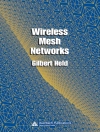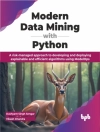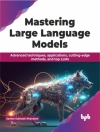Intelligent multimedia surveillance concerns the analysis of multiple sensing inputs including video and audio streams, radio-frequency identification (RFID), and depth data. These data are processed for the automated detection and tracking of people, vehicles, and other objects. The goal is to locate moving targets, to understand their behavior, and to detect suspicious or abnormal activities for crime prevention. Despite its benefits, there is societal apprehension regarding the use of such technology, so an important challenge in this research area is to balance public safety and privacy.
This edited book presents recent findings in the field of intelligent multimedia surveillance emerging from disciplines such as multimedia computing, computer vision, and artificial intelligence. It consists of nine chapters addressing intelligent video surveillance, video analysis of crowds, privacy issues in intelligent multimedia surveillance, RFID technology for localization of objects, object tracking using visual saliency information, estimating multiresolution depth using active stereo vision, and performance evaluation for video surveillance systems.
The book will be of value to researchers and practitioners working on related problems in security, multimedia, and artificial intelligence.
Cuprins
Chap. 1 – Intelligent Video Surveillance as a Service.- Chap. 2 – A Literature Review on Video Analysis of Crowded Scenes.- Chap. 3 – Privacy and Security in Video Surveillance.- Chap. 4 – Object Video Streams: A Framework for Preserving Privacy in Video Surveillance.- Chap. 5 – Surveillance Privacy Protection.- Chap. 6 – RFID Localization Improved by Motion Segmentation in Multimedia Surveillance Systems .- Chap. 7 – A Framework For Object Tracking Using Visual Saliency Information.- Chap. 8 – Scene Understanding Via Multiresolution Disparity Map in PTZ Camera Network.- Chap. 9 – Performance Evaluation in Video-Surveillance Systems: the Event Video Project Evaluation Protocols.












